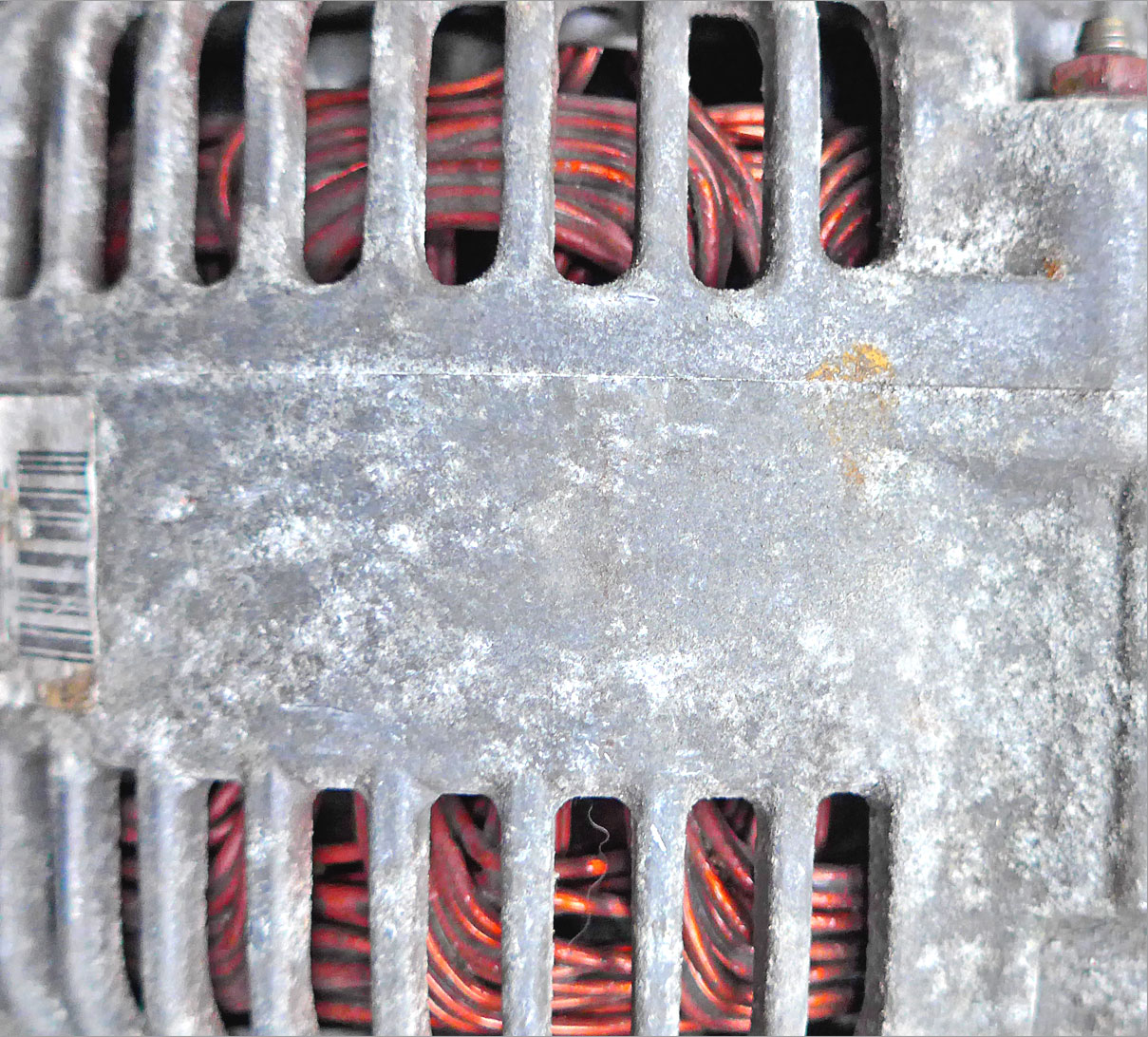year around Northern driven cars and rust
#1
#2
No personal experience (new car!!) but you might check out a recent posting on this site:
If yo run AS, what is your experience?
I am south of Boston (Scituate) and determined to use the Jag on dry Winter days.
Does this undercarriage look right to you?
Also, would be interested to hear what tires you run in the Winter (Winter or AS?).If yo run AS, what is your experience?
I am south of Boston (Scituate) and determined to use the Jag on dry Winter days.
#3
I run winters. They are blizzaks and the performance has been great. I almost never need to put the car into the awful snow/ice mode and feel confident that I won't be responsible for any fender benders. I figure the car is just too good to compromise and since the wear is shared between the summers and snows it doesn't even cost much more than all seasons ( admittedly an extra set of wheels was an investment but they are a different style so gives me another look).
#4
The F is mostly aluminum (aluminuim  if you call the rubber on the wheels tyres) which CAN corrode, but it is not likely to cause any significant structural issues.
if you call the rubber on the wheels tyres) which CAN corrode, but it is not likely to cause any significant structural issues.
You SHOULD have a look at the underbody braces which can rust, and probably are starting to. Even if treated properly, road grit can wear off the coatings and require periodic repainting. Several Topics here showing pictures before & after.
 if you call the rubber on the wheels tyres) which CAN corrode, but it is not likely to cause any significant structural issues.
if you call the rubber on the wheels tyres) which CAN corrode, but it is not likely to cause any significant structural issues.You SHOULD have a look at the underbody braces which can rust, and probably are starting to. Even if treated properly, road grit can wear off the coatings and require periodic repainting. Several Topics here showing pictures before & after.
#5
The following users liked this post:
Carbuff2 (04-04-2021)
#6
The following users liked this post:
scm (04-04-2021)
#7
Back to a serious answer to the question.
I just ran across a timely article from Rock Auto on aluminum corrosion, copied below. I'm pretty sure that the bodies on our Fs are painted....<WHEW> Just be aware of the possible effects of road grit.
++++++++++++++++++Auto Parts, Canoes & Aluminum Oxide

My van has a lot of corrosion, but its steel body looks surprisingly good. The corrosion is found under the hood where the original smooth surfaces and crisp edges on aluminum parts and brackets have eroded away as a white dust (close-up of the van's original equipment aluminum alternator is shown below).

But wait, aluminum is supposed to not corrode! Those battleship-class aluminum canoes I remember from summer camp were indestructible.
Bare aluminum actually corrodes immediately whenever it is exposed to air or water. A layer of aluminum oxide forms which protects the aluminum from further corrosion. Those aluminum canoes were dull gray in color because they were covered with aluminum oxide. Shiny aluminum exposed after campers crashed their canoes into each other was quickly dulled by a new layer of protective aluminum oxide.
Corrosion damage occurs when aluminum surface metal is repeatedly converted to an aluminum oxide layer which is subsequently destroyed/removed. Theoretically, if you had campers crashing their canoes together for enough years, then you would eventually convert their canoes into piles of aluminum oxide. However, the corrosion process would speed up drastically if you stuck the aluminum canoes in an ocean or exposed them to the salty mist covering many American and Canadian roads in wintertime!
Salts (sodium, calcium and magnesium chlorides) commonly used to deice roads and naturally present on the seacoasts, attack aluminum in a couple of different ways. Salt ions can directly break down the aluminum oxide layer. Salt also combines with water to create an electrolyte that eats away the aluminum oxide layer as electrons are pulled away and transferred to nearby parts made of steel, copper or some other dissimilar metal. Salt attracts water which means the moisture in the air on a humid day can be enough to start this galvanic corrosion.
Aluminum brackets, alternator housings, wheels and other parts made of relatively thick aluminum might suffer cosmetic corrosion damage but still work fine. Parts like A/C condensers, radiators, turbocharger intercoolers, and engine oil coolers are more vulnerable because to work properly, they must have tubes and fins with relatively thin walls. Corrosion that penetrates tube walls causes leaks and corroded fins reduce cooling capacity.
Part manufacturers have learned a lot of methods for protecting aluminum. There are also now more corrosion resistant aluminum grades and alloys. The pages for aluminum parts in the RockAuto.com catalog often include descriptions of the corrosion protection used: zinc coated for additional corrosion protection; sprayed with a clear, anti-corrosive protective; coated for high corrosion resistance; anodized for long-lasting corrosion resistance; powder coated; etc.
pages for aluminum parts in the RockAuto.com catalog often include descriptions of the corrosion protection used: zinc coated for additional corrosion protection; sprayed with a clear, anti-corrosive protective; coated for high corrosion resistance; anodized for long-lasting corrosion resistance; powder coated; etc.
Durability testing methods used, such as salt-spray and corrosive-bath, are also often found on parts' Info pages. A/C Refrigerant Oil, Coolant/Antifreeze and the other fluids RockAuto sells are formulated to better protect new aluminum parts from internal corrosion as well.
As with steel parts, vehicle owners should try to wash salt grime off aluminum parts whenever possible. Any aluminum part with a shiny appearance is being protected by a clear coating of some type, otherwise the dull gray aluminum oxide layer would quickly form. Be careful not to "polish" off protective coatings. And, do not worry too much. My 30-year-old van still runs fine even if some of its aluminum parts are a tad misshapen!
Tom Taylor,
RockAuto.com
I just ran across a timely article from Rock Auto on aluminum corrosion, copied below. I'm pretty sure that the bodies on our Fs are painted....<WHEW> Just be aware of the possible effects of road grit.
++++++++++++++++++Auto Parts, Canoes & Aluminum Oxide

My van has a lot of corrosion, but its steel body looks surprisingly good. The corrosion is found under the hood where the original smooth surfaces and crisp edges on aluminum parts and brackets have eroded away as a white dust (close-up of the van's original equipment aluminum alternator is shown below).

But wait, aluminum is supposed to not corrode! Those battleship-class aluminum canoes I remember from summer camp were indestructible.
Bare aluminum actually corrodes immediately whenever it is exposed to air or water. A layer of aluminum oxide forms which protects the aluminum from further corrosion. Those aluminum canoes were dull gray in color because they were covered with aluminum oxide. Shiny aluminum exposed after campers crashed their canoes into each other was quickly dulled by a new layer of protective aluminum oxide.
Corrosion damage occurs when aluminum surface metal is repeatedly converted to an aluminum oxide layer which is subsequently destroyed/removed. Theoretically, if you had campers crashing their canoes together for enough years, then you would eventually convert their canoes into piles of aluminum oxide. However, the corrosion process would speed up drastically if you stuck the aluminum canoes in an ocean or exposed them to the salty mist covering many American and Canadian roads in wintertime!
Salts (sodium, calcium and magnesium chlorides) commonly used to deice roads and naturally present on the seacoasts, attack aluminum in a couple of different ways. Salt ions can directly break down the aluminum oxide layer. Salt also combines with water to create an electrolyte that eats away the aluminum oxide layer as electrons are pulled away and transferred to nearby parts made of steel, copper or some other dissimilar metal. Salt attracts water which means the moisture in the air on a humid day can be enough to start this galvanic corrosion.
Aluminum brackets, alternator housings, wheels and other parts made of relatively thick aluminum might suffer cosmetic corrosion damage but still work fine. Parts like A/C condensers, radiators, turbocharger intercoolers, and engine oil coolers are more vulnerable because to work properly, they must have tubes and fins with relatively thin walls. Corrosion that penetrates tube walls causes leaks and corroded fins reduce cooling capacity.
Part manufacturers have learned a lot of methods for protecting aluminum. There are also now more corrosion resistant aluminum grades and alloys. The
 pages for aluminum parts in the RockAuto.com catalog often include descriptions of the corrosion protection used: zinc coated for additional corrosion protection; sprayed with a clear, anti-corrosive protective; coated for high corrosion resistance; anodized for long-lasting corrosion resistance; powder coated; etc.
pages for aluminum parts in the RockAuto.com catalog often include descriptions of the corrosion protection used: zinc coated for additional corrosion protection; sprayed with a clear, anti-corrosive protective; coated for high corrosion resistance; anodized for long-lasting corrosion resistance; powder coated; etc.Durability testing methods used, such as salt-spray and corrosive-bath, are also often found on parts' Info pages. A/C Refrigerant Oil, Coolant/Antifreeze and the other fluids RockAuto sells are formulated to better protect new aluminum parts from internal corrosion as well.
As with steel parts, vehicle owners should try to wash salt grime off aluminum parts whenever possible. Any aluminum part with a shiny appearance is being protected by a clear coating of some type, otherwise the dull gray aluminum oxide layer would quickly form. Be careful not to "polish" off protective coatings. And, do not worry too much. My 30-year-old van still runs fine even if some of its aluminum parts are a tad misshapen!
Tom Taylor,
RockAuto.com
Thread
Thread Starter
Forum
Replies
Last Post
Currently Active Users Viewing This Thread: 1 (0 members and 1 guests)



